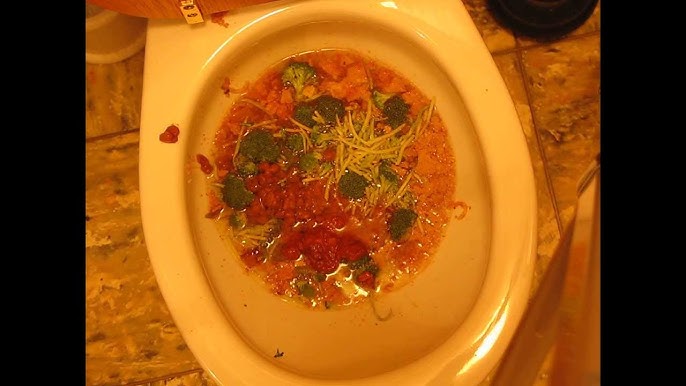Are You Capable to Dispose of Food Down the Toilet?
Are You Capable to Dispose of Food Down the Toilet?
Blog Article
How do you actually feel in regards to Think Twice Before Flushing Food Down Your Toilet?

Intro
Lots of people are often faced with the dilemma of what to do with food waste, especially when it concerns leftovers or scraps. One typical inquiry that develops is whether it's alright to flush food down the bathroom. In this article, we'll explore the reasons that people might consider purging food, the consequences of doing so, and alternate approaches for correct disposal.
Reasons why people may take into consideration purging food
Absence of recognition
Some individuals may not understand the prospective injury caused by purging food down the bathroom. They might erroneously think that it's a harmless practice.
Comfort
Purging food down the bathroom may feel like a fast and easy remedy to disposing of undesirable scraps, particularly when there's no nearby garbage can offered.
Laziness
Sometimes, people may merely choose to flush food out of large laziness, without thinking about the repercussions of their activities.
Consequences of flushing food down the toilet
Environmental effect
Food waste that ends up in waterways can contribute to air pollution and harm water ecosystems. Additionally, the water made use of to flush food can stress water resources.
Pipes issues
Purging food can cause blocked pipelines and drains, causing costly pipes fixings and aggravations.
Kinds of food that need to not be purged
Coarse foods
Foods with coarse structures such as celery or corn husks can get tangled in pipes and create clogs.
Starchy foods
Starchy foods like pasta and rice can absorb water and swell, bring about obstructions in pipelines.
Oils and fats
Greasy foods like bacon or cooking oils must never be purged down the toilet as they can strengthen and create obstructions.
Appropriate disposal methods for food waste
Using a garbage disposal
For homes furnished with garbage disposals, food scraps can be ground up and purged through the pipes system. Nonetheless, not all foods are suitable for disposal in this fashion.
Recycling
Particular food product packaging materials can be recycled, decreasing waste and lessening environmental impact.
Composting
Composting is an environmentally friendly means to take care of food waste. Organic materials can be composted and utilized to enhance dirt for horticulture.
The significance of appropriate waste administration
Minimizing ecological injury
Correct waste management methods, such as composting and recycling, assistance reduce contamination and preserve natural resources for future generations.
Shielding pipes systems
By preventing the practice of flushing food down the bathroom, house owners can protect against costly pipes repair work and maintain the stability of their plumbing systems.
Final thought
Finally, while it might be tempting to purge food down the commode for ease, it is essential to comprehend the possible effects of this action. By adopting proper waste administration methods and disposing of food waste properly, individuals can contribute to healthier plumbing systems and a cleaner setting for all.
FLUSH FOOD DOWN THE TOILET?
FLUSHING FOOD CAN CAUSE BLOCKED DRAINS IN YOUR HOME
All of the plumbing fixtures in your home are connected to the same sewer pipe outside of your home. This outdoor sewer pipe is responsible for transporting all the wastewater from your home to the Council sewer mains. Even small pieces of food that go down the kitchen sink can cause problems for your sewer. It should therefore be obvious that flushing larger bits of food, such as meat, risks a clog in either the toilet itself or the sewer pipes. Flushing greasy food is even more problematic because oil coagulates when it cools, coating the interior lining of your pipes.
THE TOILET IS NOT A BIN
Food isn’t the only thing that people shouldn’t be flushing down the toilet. People use the toilet to dispose of all kinds of things such as tampons, makeup wipes, dental floss, kitty litter and even underwear. Water goes to great lengths to educate residents about the high costs and stress placed on wastewater treatment systems simply from people flushing the wrong stuff down the toilet. It costs taxpayers millions of dollars each year, and homeowners thousands in blocked drain repairs.
FLUSHING FOOD IS A WASTE OF WATER
Flushing food is a waste of our most precious resource - water. In June this year Level 1 water restrictions were introduced to protect water supply from drought conditions. Much of New South Wales continues to be affected by prolonged drought with recent figures revealing up to 97 per cent of the state remains in drought. Depending on whether you have a single or dual flush toilet, every single flush uses between five and 11 litres of water. In the current climate this is a huge amount of water to be wasting on flushing food that should be placed in the bin (or better yet, the compost).
https://www.jabplumbingsolutions.com.au/blog/can-you-flush-food-down-the-toilet

I hope you enjoyed reading our article on What Can Happen If You Flush Food Down the Toilet?. Many thanks for finding the time to read our piece of content. Are you aware of anybody else who is involved in the niche? Do not hesitate to promote it. Bless you for being here. Revisit us soon.
Schedule Here Report this page